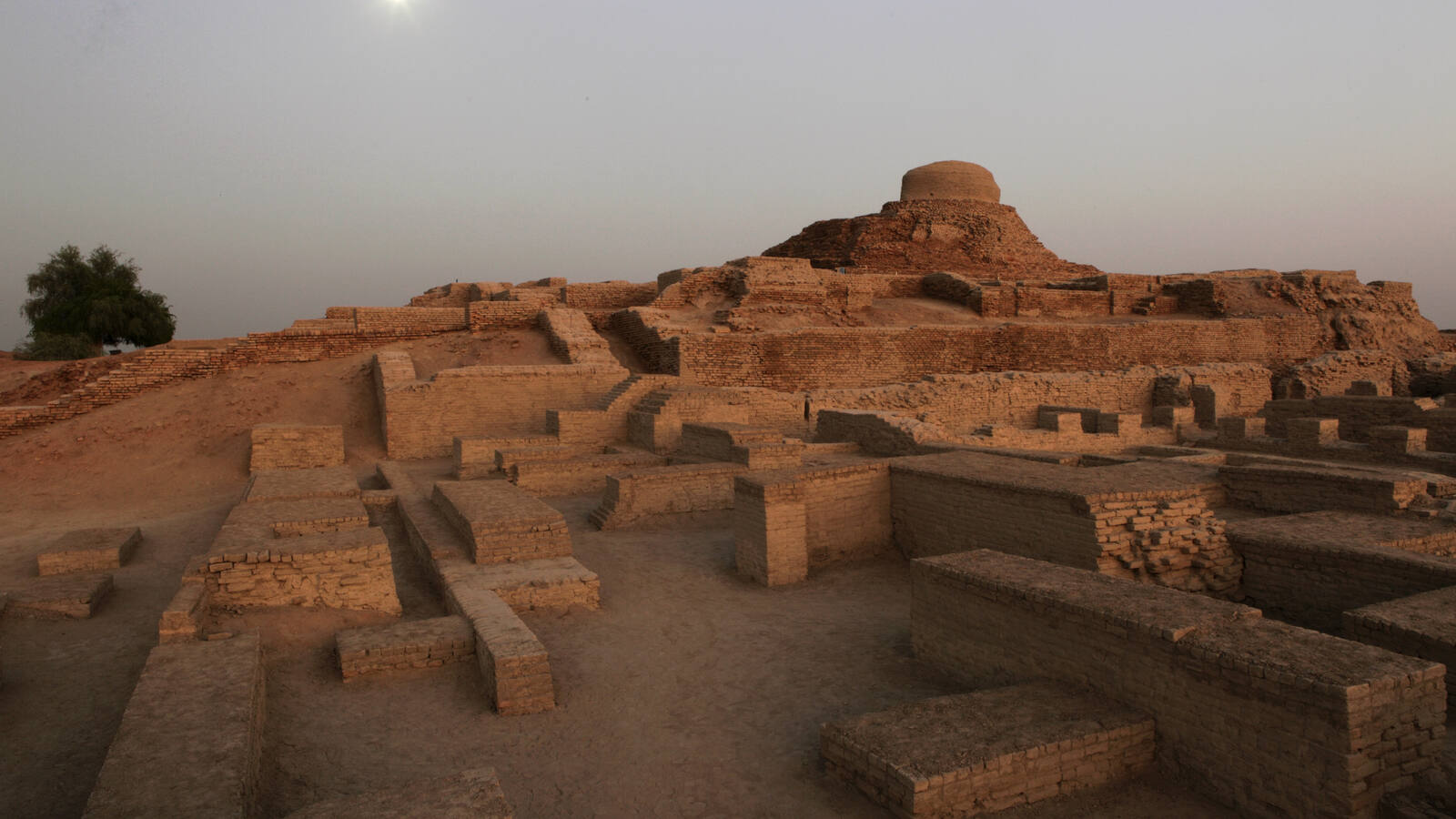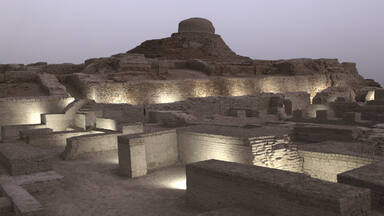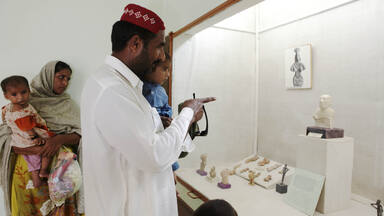Pakistan - The post-campaign activities: Archaeological Ruins at Moenjodaro
With regard to carrying on the aforementioned long-term issues, an Action Plan for 1997-2000 was developed to ensure the sustainability of the conservation work. Preventive measures using low cost technology contributed to the preservation of the site and knowledge of general conservation.
The UNESCO World Heritage Centre, UNESCO Office in Islamabad and the Government of Pakistan are continuing their work to ensure that sustainable and cost effective solutions for the preservation of the archaeological ruins are continued. In addition to the technical aspects of conservation, plans are being prepared to support a dynamic link between the local communities and the property, recognizing the benefits for the communities in both the safeguarding of the property and the social and economic development.
The forthcoming activities at this World Heritage property will focus on creating a stronger link with the local communities. Having addressed the most immediate conservation needs, the tourism development and the creation of an Archaeological Park as part of an updated Master Plan is now crucial for the future. Therefore, emphasis will be put on the development of a long term vision for the property that will integrate social and economic benefits for the communities and Pakistan at large. Therefore the further development of Moenjodaro will also be aimed at the wider region, building on the strong cultural links between riverine and maritime coastal civilizations.
These future plans for the site include investigations through dry core drilling to determine the actual extent of the city which is estimated at 400 ha, whereas the inscribed core area of the property currently measures around 100ha. If necessary an extension of site boundaries will be required to ensure its adequate protection. Further topographic mapping and documentation, emergency stabilization of walls, a new landscaping scheme to prevent erosion, and updating of an on-site documentation centre are also foreseen.
Through the development and implementation of a site presentation and tourism strategy, the values of the property will be greatly enhanced. The site Museum, housing priceless relics, including engraved seals, ornaments, utensils, pottery, weapons and toys, is in dire need of a refurbishment. Together with improved interpretation, appropriate landscaping and an access plan to the immense archaeological site visitors can be provided with a unique experience. Through the involvement of all stakeholders, including the tourism industry, small scale tourism related activities can be set up which would greatly improve the socio-economic development of the area and renew the sense of ownership.
The active support and involvement of the international community will be important to ensure the future success of these activities.


